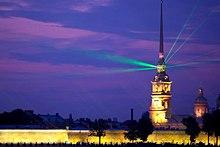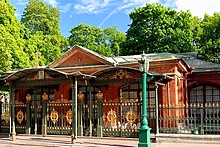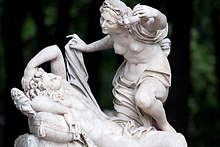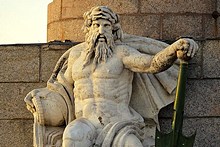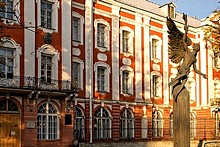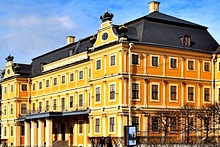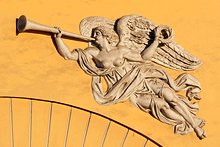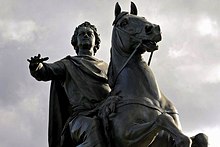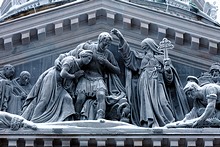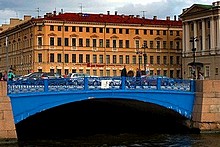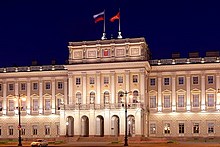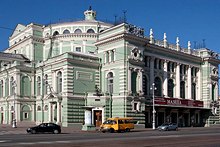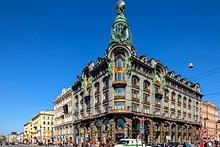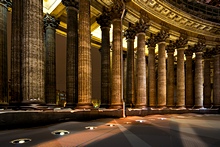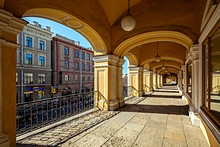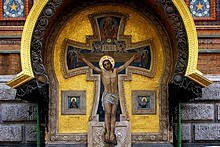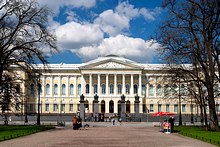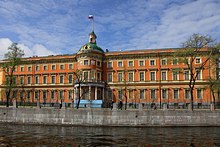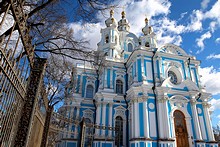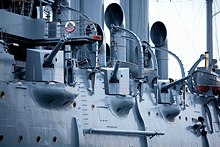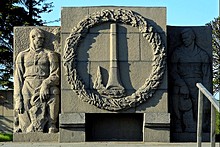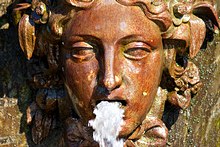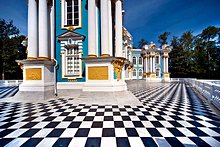A Virtual Tour of St. Petersburg
Welcome to our tour of St. Petersburg! Here we will introduce you to Russia's greatest historical and cultural treasure, its "Northern Capital" - the famous "Venice of the North". Virtually unharmed by the 1930-50s period of Stalinist reconstruction, downtown St. Petersburg is crowded with splendid palaces, impressive historical monuments, tree-lined avenues and beautiful bridges. Although not yet 300 years old, St. Petersburg is a city crammed with historical and cultural associations and a refined air of mystery.
Just sit back, wander around the virtual sights on our tour and discover the unparalleled beauty of St. Petersburg, Russia.
Start your tour here and follow the NEXT links... or select one of the landmarks below.
Visit Russia's cultural capital and enjoy the beautiful European architecture, Russian cathedrals and historical sights of Emperor Peter the Great's "Venice of the North".
The first structure in St. Petersburg, built to protect Peter the Great's northern city from the threat of Swedish attacks and now the emblem of the city and the resting place of many of the Russian Tsars.
This was the very first wooden house to be built in St. Petersburg and was home to Peter the Great himself between 1703 and 1708. Perfectly preserved for almost 300 years, the Cabin now serves as a museum for visitors to St. Petersburg to enjoy.
The palace was built in the early 18th century by the Italian architect Domenico Trezinni to host the Emporer's festive assamblei and to entertain the local gentry. Take a look at the carefully preserved palace and enjoy a gentle stroll through the statue-lined avenues of Peter's favorite park.
Magnificent architectural ensemble built after the turn of the 19th century on Vasilevsky Island - just across the Neva River from the beautiful Winter Palace. Enjoy the Stock Exchange's grandiose columns, reminiscent of the architecture of Ancient Greece, and the impressive red Rostral Columns, originally built as beacons for ships navigating the waters of the Neva River.
The impressive red-and-white Twelve Colleges building was built in the 1740s and since the early 19th century has played host to one of the most prominent universities in Russia. Its scholarly graduates include the famous chemist Dmitry Mendeleev, the creator of the Periodic Table of Elements, and non other than the famous revolutionary Vladimir Lenin himself.
Stunning mansion built in the early 1700s for the Governor General of St. Petersburg, Alexander Menshikov. Now hosts a branch of the State Hermitage Museum and a magnificent collection of Russian cultural artifacts from the 18th century.
One of the largest and most impressive art collections in the world. The Hermitage was founded on the original 18th century collection of Empress Catherine the Great and is housed in the magnificent Baroque Winter Palace and three other majestic buildings along the Neva River embankment.
The heart of St. Petersburg and the city's main square - enclosed by Rastrelli's beautiful Baroque Winter Palace, Rossi's imposing General Staff Building and the historical home of the Russian Navy - the Admiralty, and centered on the impressive, 155 foot-tall Alexander Column.
One of the first structures to be built in St. Petersburg and the construction site for some of the first ships of Russia's Baltic Fleet. Restructured in the early 19th century to be a marvelous example of the Russian Empire style, complete with white columns, stucco relief and a gleaming spire, which can be seen throughout the center of the city.
This impressive equestrian monument was commissioned by Empress Catherine the Great to honor Peter the Great, the founder of the city. Depicted as a fearless Roman hero, the statue is the subject of one of the Russian poet Pushkin's most famous and best-loved works.
Built in the first half of the 19th century by the French architect Auguste Montferrand, this enormous cathedral features impressive solid granite columns, incredibly detailed mosaic icons, a magnificent gilded dome and the most impressive views of the city from its high colonnade.
The widest bridge in the world with an impressive 319-foot span encompassing the entire width of St. Isaac's Square. Built of cast iron in 1818 by the Russian architect Geste, the bridge spans the Moika River just in front of the grandiose Mariinsky Palace, a former Imperial residence but now home to City Hall.
Filled with magnificent interiors and period furniture, the palace was built half way through the 19th century for the Grand Duchess Maria, daughter to Emperor Nicholas I. The palace is now home to St. Petersburg's City Council.
The impressive green-and-white theater was built in 1859 and is home to the world-famous Kirov Ballet. The theater has played host to some of Russia's greatest performers, including the dancers Nizhinsky, Pavlova and Nureev.
St. Petersburg's lively main street, lined with many of the city's most famous attractions and the hub of its commercial and business activities. Nevsky runs right through the heart of the city from the austere Alexander Nevsky Monastery to the Baroque splendors of the Winter Palace and the Hermitage.
Inspired by the Basilica of St. Peters in Rome, the impressively proportioned Cathedral of Our Lady of Kazan was built just after the turn of the 19th century by the Russian architect Andrei Voronikhin. Although closed for services during most of the Soviet era, the cathedral is open today and a wonderful example of a working Russian Orthodox Church.
Constructed in the middle of the 18th century on Nevsky Prospekt, Gostiny Dvor was one of the world's first shopping malls and is now the largest department store in the city.
Built on the spot where Emperor Alexander II was assassinated in 1881, this church is a lively profusion of brightly colored onion domes, glittering spires and a breathtakingly detailed mosaic interior. St. Petersburg's answer to Moscow's St. Basil's Cathedral!
The beautiful, Classical ensemble of Carlo Rossi's Arts Square encompasses many of the city's most important cultural institutions, including the famous Russian Museum, housed in the majestic white-columned Mikhailovsky Palace and home to an extensive collection of Russian art from the 12th to the 20th centuries.
An impressive, fortified redbrick palace built in the late 18th century for the paranoid and ill-fated son of Catherine the Great, Emperor Paul I. Built to assuage his fear of assassination, the Emperor's efforts were confounded when a conspiracy of the Palace Guard and the his own son murdered him in his very own castle bedroom in 1801.
Stunning blue-and-white cathedral and convent ensemble designed in the mid-18th century by the famous Italian Baroque architect Francesco Bartolomeo Rastrelli. Originally created to house the monastic lifestyle of Elizabeth, the daughter of Peter the Great, and now home to the offices of St. Petersburg's City Administration.
This veteran Russian Battleship was built at the end of the 19th century, served in the Russo-Japanese War of 1904-5 and played a vital role in the October Revolution of 1917. Today the cruiser has been carefully preserved and serves as a fascinating museum to the achievements of the Russian Navy.
Mass burial site and sobering monument to the thousands of Russian citizens that died during the WWII Nazi Siege of Leningrad.
The luxurious Imperial palace and estate built in 1710 on the shore of the Gulf of Finland by Peter the Great. Known as "The Russian Versailles", the palace features some incredible restored interiors and magnificent grounds full of statues, pavilions and fountains.
The splendid Baroque Catherine Palace, built in the early 18th century by the famous Italian Rastrelli. Despite being virtually destroyed by Nazi bombing during WWII, the palace has been almost entirely restored and its lavish period interiors painstakingly recreated.


